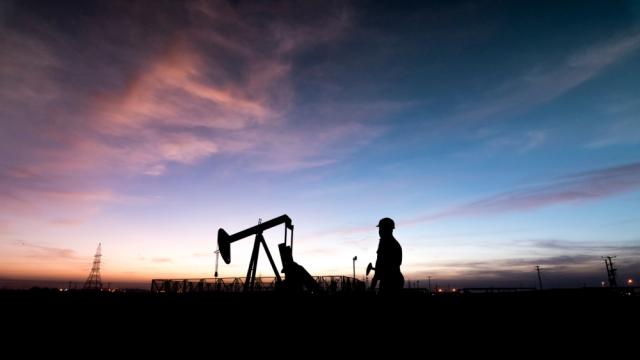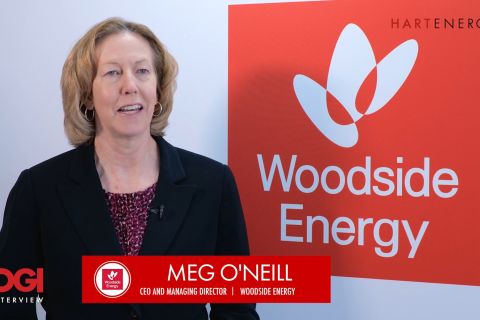
RED President Steve Hendrickson also notes increased attention on ESG metrics, which could be another reason the oil and gas industry is focusing more on proper and timely well abandonment. (Source: Shutterstock.com)
This is an excerpt from the Ralph E. Davis Associates (RED) Weekly E&P Update Newsletter.
Perhaps you’ve noticed lately that an increased level of attention is going to the abandonment of oil and gas wells, and if you’re like me, wondered what’s behind it. I’m aware of a few teams that have formed entities (both for-profit and nonprofit) to properly plug old wells and reclaim the well locations; a couple of examples are P&A Exchange and Fellow Environmental Partners. I’ve heard that others may be preparing to enter the space, and this is in addition to those that were already involved.
As we mentioned in one of our newsletters last year, unplugged and improperly plugged wells are a significant problem in Texas, Louisiana and other hydrocarbon-producing states. According to a recent article by S&P Global Platts, Texas currently has about 6,200 “orphaned” wells (unplugged wells that were owned by companies that are no longer solvent). The number has the potential to grow, however, due to an estimated 37,000 unplugged wells that have been inactive over a decade and about 150,000 inactive wells overall. Texas currently has a state-run program to abandon orphaned wells and is currently plugging about 1,800 per year.
Although the problem of orphaned wells isn’t new, there does seem to be increased interest in addressing it. I think this is due to a couple of factors. First, and probably most importantly, is legislation being negotiated in Washington as part of the infrastructure and jobs bills that includes significant funds for the abandonment of old wells and mines. Although the legislation isn’t final, the numbers being considered are several hundred million dollars per year. Not only would these funds protect the environment by preventing the movement of hydrocarbons and saltwater to freshwater aquifers in unplugged wells, but they’d also provide a source of jobs for oilfield workers who have been impacted by the recent downturn in drilling activity.
Increased attention on ESG metrics is another reason I think the industry is focusing more on proper and timely well abandonment. It’s no secret that the upstream industry has received a lot of criticism lately and that’s had an impact on the willingness of some investors to continue to fund oil and gas activities. It makes sense then for the industry to be more proactive in being good stewards of the land on which they operate.
About the Author:
Steve Hendrickson is the president of Ralph E. Davis Associates, an Opportune LLP company. Hendrickson has over 30 years of professional leadership experience in the energy industry with a proven track record of adding value through acquisitions, development and operations. In addition, he possesses extensive knowledge of petroleum economics, energy finance, reserves reporting and data management, and has deep expertise in reservoir engineering, production engineering and technical evaluations. Hendrickson is a licensed professional engineer in the state of Texas and holds an M.S. in Finance from the University of Houston and a B.S. in Chemical Engineering from The University of Texas at Austin. He recently served as a board member of the Society of Petroleum Evaluation Engineers and is a registered FINRA representative.
Recommended Reading
Iraq to Seek Bids for Oil, Gas Contracts April 27
2024-04-18 - Iraq will auction 30 new oil and gas projects in two licensing rounds distributed across the country.
US Raises Crude Production Growth Forecast for 2024
2024-03-12 - U.S. crude oil production will rise by 260,000 bbl/d to 13.19 MMbbl/d this year, the EIA said in its Short-Term Energy Outlook.
Petrobras to Step Up Exploration with $7.5B in Capex, CEO Says
2024-03-26 - Petrobras CEO Jean Paul Prates said the company is considering exploration opportunities from the Equatorial margin of South America to West Africa.
Exxon Versus Chevron: The Fight for Hess’ 30% Guyana Interest
2024-03-04 - Chevron's plan to buy Hess Corp. and assume a 30% foothold in Guyana has been complicated by Exxon Mobil and CNOOC's claims that they have the right of first refusal for the interest.
The OGInterview: How do Woodside's Growth Projects Fit into its Portfolio?
2024-04-01 - Woodside Energy CEO Meg O'Neill discusses the company's current growth projects across the globe and the impact they will have on the company's future with Hart Energy's Pietro Pitts.



